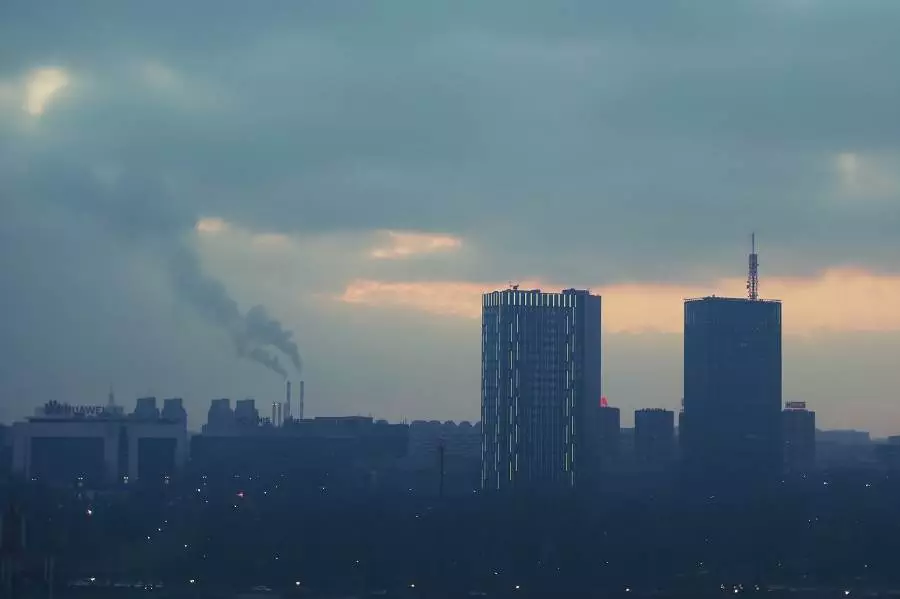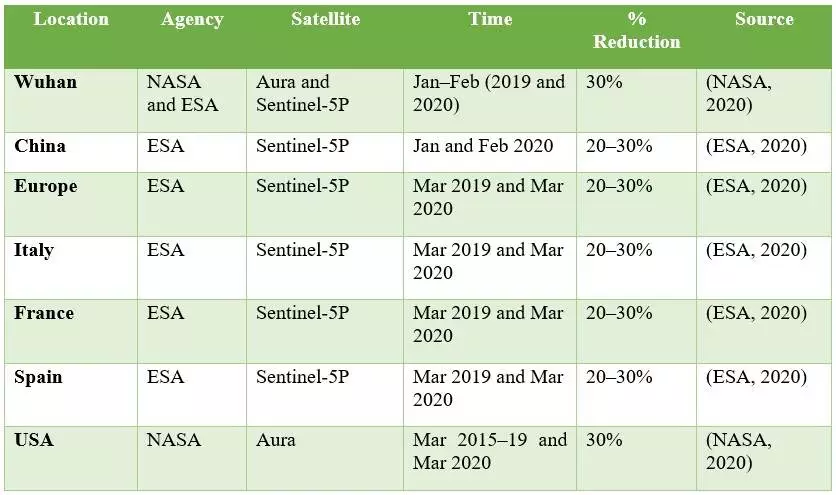Introduction
The ongoing COVID-19 pandemic, also known as the coronavirus pandemic, caused by severe acute respiratory syndrome coronavirus 2 (SARS‑CoV‑2). It was first identified in Wuhan, China, in December 2019. Then the World Health Organization (WHO) declared the outbreak as a Public Health Emergency of International Concern on January 30 and as a pandemic on March 11.
Impacts of COVID-19 on Air Quality
The worldwide disruption caused by the COVID-19 pandemic has resulted in numerous impacts on global air quality. The positive and negative impacts of COVID-19 on air quality are described below:
Positive Impacts
By the end of March, many countries went into lockdown; the industrial activities shut down globally. Among many other sectors, transport is the most difficult sector due to lockdown. Road and air transport came to a stop as people are not allowed or hesitate to travel. As a result, many regions and the planet has caused to experience a drop in air pollution. According to the report, air travel dropped by 96% due to COVID-19, lowest in 75 years (CNN, 2020).
The Centre for Research on Energy and Clean Air (CREA) reported that methods to control the spread of coronaviruses, such as quarantines and lockdowns, resulted in a 25% reduction of carbon and 50% reduction of nitrogen oxide emissions in China.

Also, the European Space Agency observed a marked decline in nitrous oxide emissions from cars, power plants, as well as factories in the Po Valley region in northern Italy, coinciding with lockdowns in the region from January 1 to March 11, 2020.
NASA and ESA have been monitoring the mode of significant decreases of nitrogen dioxide gases during the initial Chinese phase of the COVID-19 pandemic. NASA uses an ozone monitoring instrument (OMI) to analyze and observe the ozone layer and pollutants such as NO2, aerosols, and others. Levels of two major air pollutants, CO2 and NO2, have been drastically reduced since lockdowns began in response to the COVID-19 pandemic.

According to German scientist Guy Brasseur, though air quality has largely improved in many regions, surface ozone can still be a problem. He said, “It means that by just reducing the [nitrogen dioxide] and the particles, you won’t solve the ozone problem.” Then he analyzed levels of nitrogen dioxide and several other types of air pollution measured by 800 ground-level air quality monitoring stations in northern China. He and his colleague detected that particulate matter pollution decreased by an average of 35 percent, and nitrogen dioxide decreased by an average of 60.
Another study published in May 2020 found that the daily global carbon emissions during the lockdown measures in early April fell by 17% and could lead to annual carbon emissions decline of up to 7%. According to the researchers, these changes would be the biggest drop since World War II. They express that these decreases mainly for reducing transportation usage and industrial activities.
Negative Impacts
Though the air quality has improved, it is temporary. Because the other pollutants such as aerosol, ozone, etc. emissions in the air have remained. For example, the average surface ozone concentration increased in China by a factor of 1.5-2 percent after the lockdowns began on January 23. Ozone has been on the rise because of the decrease in nitrogen dioxide emissions from the beginning of the lockdown. As a result, greenhouse gases continue to build up in the atmosphere, and global temperature is still increasing.
Stavrakou and her colleagues used satellite measurements of air quality to estimate the changes in nitrogen dioxide pollution over the major epicenters of the pandemic such as China, South Korea, Italy, Spain, France, Germany, Iran, and the United States. Comparison with China, this study found nitrogen dioxide pollution did not decrease over Iran. Although NO2 drop in China, it did not achieve an air quality of the standard considered acceptable by health authorities.
Conclusion
At last, it is concluded that the global pandemic COVID-19 poses a serious threat to human health. However, it is also considered as a “Blessing in Disguise” because of reducing pollution and reclaiming nature itself. Although this positive impact of COVID-19 on air quality may be temporary, governments and individuals should learn from this lockdown on how to reduce pollution on a long-term basis.
References
- CNN, 2020. Doi https://edition.cnn.com/2020/04/09/politics/airline-passengers-decline/index.html (2020)
- https://www.esa.int/Applications/Observing_the_Earth/Copernicus/Sentinel-5P (2020)
- M. Bauwens, S. Compernolle, T. Stavrakou, J.‐F. Müller, J. Gent, H. Eskes, P. F. Levelt, R. A, J. P. Veefkind, J. Vlietinck, Huan Yu, C. Zehner. Impact of Coronavirus Outbreak on NO2 Pollution Assessed Using TROPOMI and OMI Observations. Geophysical Research Letters, 2020.
- Xiaoqin Shi, Guy P. Brasseur. The Response in Air Quality to the Reduction of Chinese Economic Activities 1 during the COVID-19 Outbreak. Geophysical Research Letters, 2020;
- Sulaman Muhammad, Xingle Long, Muhammad Salman. COVID-19 pandemic and Environmental Pollution: A Blessings in Disguise?. Science of the Total Environment, 2020.
Author:
Nargis Akter Shapna
Soil and Environmental Sciences
University of Barishal, Bangladesh